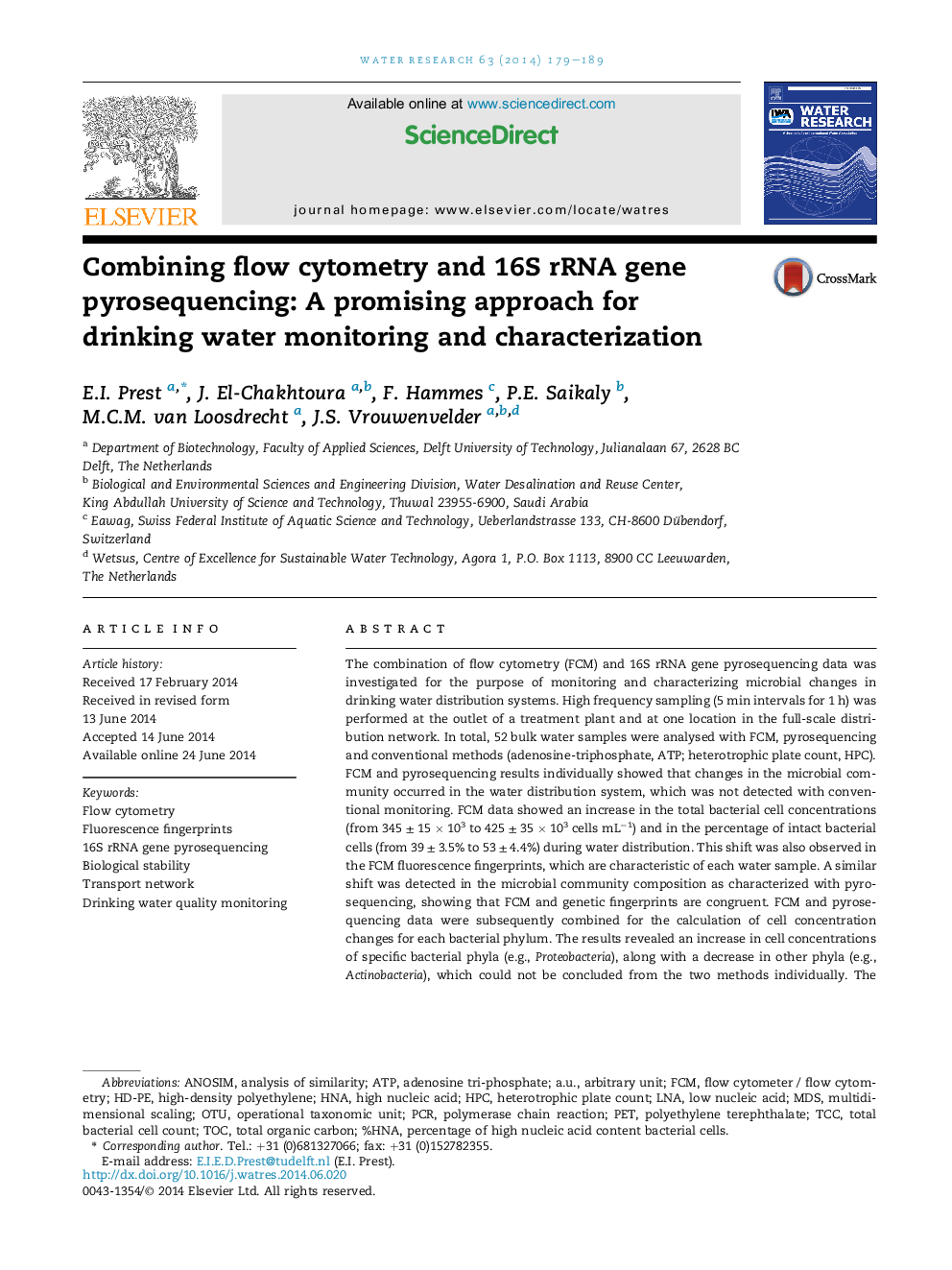| کد مقاله | کد نشریه | سال انتشار | مقاله انگلیسی | نسخه تمام متن |
|---|---|---|---|---|
| 4481471 | 1623105 | 2014 | 11 صفحه PDF | دانلود رایگان |

• 52 drinking water samples from two locations in a full-scale distribution system.
• No detectable changes were measured with conventional methods.
• Microbial changes detected with flow cytometry (FCM) and pyrosequencing individually.
• Quantification of bacterial community shifts using FCM coupled with pyrosequencing.
• Combining FCM and pyrosequencing has potential for future water quality analysis.
The combination of flow cytometry (FCM) and 16S rRNA gene pyrosequencing data was investigated for the purpose of monitoring and characterizing microbial changes in drinking water distribution systems. High frequency sampling (5 min intervals for 1 h) was performed at the outlet of a treatment plant and at one location in the full-scale distribution network. In total, 52 bulk water samples were analysed with FCM, pyrosequencing and conventional methods (adenosine-triphosphate, ATP; heterotrophic plate count, HPC). FCM and pyrosequencing results individually showed that changes in the microbial community occurred in the water distribution system, which was not detected with conventional monitoring. FCM data showed an increase in the total bacterial cell concentrations (from 345 ± 15 × 103 to 425 ± 35 × 103 cells mL−1) and in the percentage of intact bacterial cells (from 39 ± 3.5% to 53 ± 4.4%) during water distribution. This shift was also observed in the FCM fluorescence fingerprints, which are characteristic of each water sample. A similar shift was detected in the microbial community composition as characterized with pyrosequencing, showing that FCM and genetic fingerprints are congruent. FCM and pyrosequencing data were subsequently combined for the calculation of cell concentration changes for each bacterial phylum. The results revealed an increase in cell concentrations of specific bacterial phyla (e.g., Proteobacteria), along with a decrease in other phyla (e.g., Actinobacteria), which could not be concluded from the two methods individually. The combination of FCM and pyrosequencing methods is a promising approach for future drinking water quality monitoring and for advanced studies on drinking water distribution pipeline ecology.
Figure optionsDownload high-quality image (234 K)Download as PowerPoint slide
Journal: Water Research - Volume 63, 15 October 2014, Pages 179–189